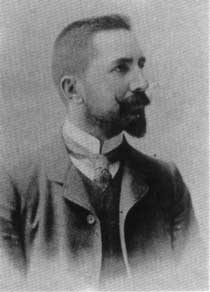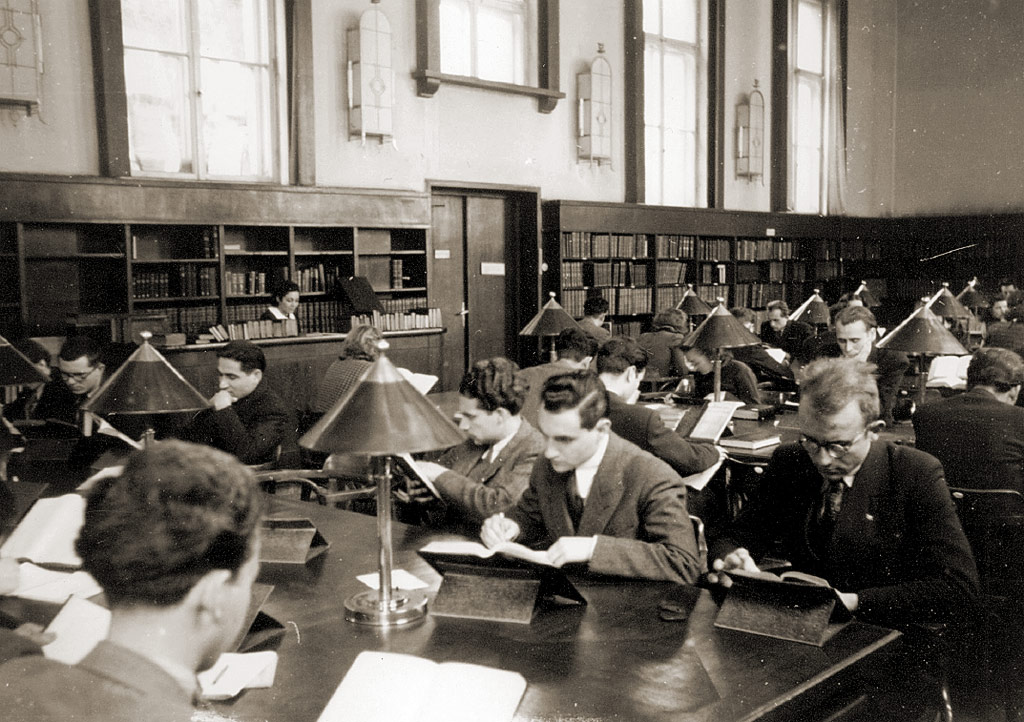|
Petar Pop-Arsov
Petar Pop-Arsov ( bg, Петър Попарсов, mk, Петар Поп Арсов) originally spelled in older Bulgarian orthography: ''Петъръ попъ Арсовъ''; (14 August 1868 – 1 January 1941) was a Bulgarian educator and revolutionary from Ottoman Macedonia, one of the founders of the Internal Macedonian Adrianople Revolutionary Organization (IMARO), known in its early times as ''Bulgarian Macedonian-Adrianople Revolutionary Committees'' (BMARC). Although he was Bulgarian teacher and revolutionary, and thought of his compatriots as Bulgarians, according to the post-WWII Macedonian historiography, he was an ethnic Macedonian. Early life He was born in 1868 in the village of Bogomila, near Veles. He was one of the leaders of the student protest in the Bulgarian Men's High School of Thessaloniki in 1887/1888 where the main objective was to replace the East Bulgarian dialect with a Macedonian dialect in the lecturing. As a consequence, he was expelled a ... [...More Info...] [...Related Items...] OR: [Wikipedia] [Google] [Baidu] |
Bogomila
Bogomila ( mk, Богомила) is a village in the municipality of Čaška, North Macedonia. It is located in the central part of the North Macedonia, close to the city of Veles and it used to be a municipality of its own. Bogomila is the birthplace of Macedonian Bulgarian revolutionary Petar Poparsov. Demographics According to the 2021 census, the village had a total of 359 inhabitants. Ethnic groups in the village include:Macedonian Census (2021) ''Book 5 - Total population according to the Ethnic Affiliation, Mother Tongue and Religion'' The State Statistical Office, Skopje, 2021 * Macedonians 319 *Persons for whom data are taken from administrative sources 32 * Albanians 3 *Serbs The Serbs ( sr-Cyr, Срби, Srbi, ) are the most numerous South Slavic ethnic group native to the Balkans in Southeastern Europe, who share a common Serbian ancestry, culture, history and language. The majority of Serbs live in their ... 1 *Others 33 References Villages in ... [...More Info...] [...Related Items...] OR: [Wikipedia] [Google] [Baidu] |
Thrace
Thrace (; el, Θράκη, Thráki; bg, Тракия, Trakiya; tr, Trakya) or Thrake is a geographical and historical region in Southeast Europe, now split among Bulgaria, Greece, and Turkey, which is bounded by the Balkan Mountains to the north, the Aegean Sea to the south, and the Black Sea to the east. It comprises southeastern Bulgaria ( Northern Thrace), northeastern Greece (Western Thrace), and the European part of Turkey (East Thrace). The region's boundaries are based on that of the Roman Province of Thrace; the lands inhabited by the ancient Thracians extended in the north to modern-day Northern Bulgaria and Romania and to the west into the region of Macedonia. Etymology The word ''Thrace'' was first used by the Greeks when referring to the Thracian tribes, from ancient Greek Thrake (Θρᾴκη), descending from ''Thrāix'' (Θρᾷξ). It referred originally to the Thracians, an ancient people inhabiting Southeast Europe. The name ''Europe'' first referred ... [...More Info...] [...Related Items...] OR: [Wikipedia] [Google] [Baidu] |
Vasil Levski
Vasil Levski ( bg, Васил Левски, spelled in old Bulgarian orthography as , ), born Vasil Ivanov Kunchev (; 18 July 1837 – 18 February 1873), was a Bulgarian revolutionary who is, today, a national hero of Bulgaria. Dubbed the ''Apostle of Freedom'', Levski ideologised and strategised a revolutionary movement to liberate Bulgaria from Ottoman rule. Levski founded the Internal Revolutionary Organisation, and sought to foment a nationwide uprising through a network of secret regional committees. Born in the Sub-Balkan town of Karlovo to middle-class parents, Levski became an Orthodox monk before emigrating to join the two Bulgarian Legions in Serbia and other Bulgarian revolutionary groups. Abroad, he acquired the nickname ''Levski'' ("Lionlike"). After working as a teacher in Bulgarian lands, he propagated his views and developed the concept of his Bulgaria-based revolutionary organisation, an innovative idea that superseded the foreign-based detachment ... [...More Info...] [...Related Items...] OR: [Wikipedia] [Google] [Baidu] |
IMARO
The Internal Macedonian Revolutionary Organization (IMRO; bg, –í—ä—Ç—Ä–µ—à–Ω–∞ –ú–∞–∫–µ–¥–æ–Ω—Å–∫–∞ –Ý–µ–≤–æ–ª—é—Ü–∏–æ–Ω–Ω–∞ –û—Ä–≥–∞–Ω–∏–∑–∞—Ü–∏—è (–í–ú–Ý–û), translit=Vatre≈°na Makedonska Revoljucionna Organizacija (VMRO); mk, –í–Ω–∞—Ç—Ä–µ—à–Ω–∞ –ú–∞–∫–µ–¥–æ–Ω—Å–∫–∞ –Ý–µ–≤–æ–ª—É—Ü–∏–æ–Ω–µ—Ä–Ω–∞ –û—Ä–≥–∞–Ω–∏–∑–∞—Ü–∏—ò–∞, translit=Vnatre≈°na Makedonska Revolucionerna Organizacija), was a secret revolutionary society founded in the Ottoman territories in Europe, that operated in the late 19th and early 20th centuries. Founded in 1893 in Salonica, initially, it aimed to gain autonomy for Macedonia (region), Macedonia and Adrianople Vilajet, Adrianople regions in the Ottoman Empire, however, later it became an agent serving Kingdom of Bulgaria, Bulgarian interests in Balkan politics. IMRO group modeled itself after the Internal Revolutionary Organization of Vasil Levski and accepted its motto "Freedom or Death" (–°–≤–æ–±–æ–¥–∞ –∏–ª–∏ —Å–º—ä—Ä—Ç—å). Starting in 1896 it fought t ... [...More Info...] [...Related Items...] OR: [Wikipedia] [Google] [Baidu] |
Young Macedonian Literary Society
The Young Macedonian Literary Association was founded in 1891 in Sofia, Bulgaria together with its magazine ''Loza''. The association was formed as primarily a scholarly and literary organization. Although the members of the Young Macedonian Literary Association, called often ''Lozars'' (from the title of their magazine) self-identified as Macedonian Bulgarians,"Though Loza adhered to the Bulgarian position on the issue of the Macedonian Slavs' ethnicity, it also favored revising the Bulgarian orthography by bringing it closer to the dialects spoken in Macedonia." Historical Dictionary of the Republic of Macedonia, Dimitar Bechev, Scarecrow Press, 2009, , p. 241.The Young Macedonian Literary Association's Journal, Loza, was also categorical about the Bulgarian character of Macedonia: "A mere comparison of those ethnographic features which characterize the Macedonians (we understand: Macedonian Bulgarians), with those which characterize the free Bulgarians, their juxtaposition wit ... [...More Info...] [...Related Items...] OR: [Wikipedia] [Google] [Baidu] |
Sofia University
Sofia University, "St. Kliment Ohridski" at the University of Sofia, ( bg, Софийски университет „Св. Климент Охридски“, ''Sofijski universitet „Sv. Kliment Ohridski“'') is the oldest higher education institution in Bulgaria. Founded on 1 October 1888, the edifice of the university was constructed between 1924 and 1934 with the financial support of the brothers Evlogi Georgiev and Hristo Georgiev (whose sculptures are now featured on its façade) and has an area of 18,624 m2 and a total of 324 premises. The university has 16 faculties and three departments, where over 21,000 students receive their education. The current rector is Anastas Gerdzhikov. It has been consistently ranked as the top university in Bulgaria according to national and international rankings, being constantly among the best four percent of world universities according to ''QS World University Rankings''. History The university was founded on 1 October 1888— ... [...More Info...] [...Related Items...] OR: [Wikipedia] [Google] [Baidu] |
Slavistics
Slavic (American English) or Slavonic (British English) studies, also known as Slavistics is the academic field of area studies concerned with Slavic areas, languages, literature, history, and culture. Originally, a Slavist or Slavicist was primarily a linguist or philologist researching Slavistics. Increasingly, historians, social scientists, and other humanists who study Slavic area cultures and societies have been included in this rubric. In North America, Slavic studies is dominated by Russian studies. Ewa Thompson, a professor of Slavic studies at Rice University, described the situation of non-Russian Slavic studies as "invisible and mute." History Slavistics emerged in late 18th and early 19th century, simultaneously with Romantic nationalisim among various Slavic nations, and ideological attempts to establish a common sense of Slavic community, exemplified by the Pan-Slavist movement. Among the first scholars to use the term was Josef Dobrovský (1753–1829). The h ... [...More Info...] [...Related Items...] OR: [Wikipedia] [Google] [Baidu] |
Serbianisation
Serbianisation or Serbianization, also known as Serbification, and Serbisation or Serbization ( sh-Latn-Cyrl, separator=" / ", srbizacija, —Å—Ä–±–∏–∑–∞—Ü–∏—ò–∞ or sh-Latn-Cyrl, label=none, separator=" / ", posrbljavanje, –ø–æ—Å—Ä–±—ô–∞–≤–∞—ö–µ; sq, serbizimi; bg, —Å—ä—Ä–±–∏–∑–∞—Ü–∏—è, translit=sarbizatsiya or ; mk, —Å—Ä–±–∏–∑–∞—Ü–∏—ò–∞, translit=srbizacija; ro, serbificare) is the spread of Serbian culture, people, and language, either by social integration or by cultural or forced assimilation. Medieval period Populated by Bulgarians and Romanians, the area between the Morava and Timok rivers became part of the Serbian state in 1291/1292 which began the Serbianisation of the region. "An important Romanian concentration existed in the region between the Timok and Morava Rivers.... This region was taken by Serbia in 1291 or 1292 from two Cuman chiefs, Darman and Kudelin, that were first under Hungarian vassalage. Only then did the Serbianization of this region previously ... [...More Info...] [...Related Items...] OR: [Wikipedia] [Google] [Baidu] |
Belgrade University
The University of Belgrade ( sr, / ) is a public university in Serbia. It is the oldest and largest modern university in Serbia. Founded in 1808 as the Belgrade Higher School in revolutionary Serbia, by 1838 it merged with the Kragujevac-based departments into a single university. The university has around 97,700 enrolled students and over 4,800 academic staff members. Since its founding, the university has educated more than 378,000 bachelors, around 25,100 magisters, 29,000 specialists and 14,670 doctors. The university comprises 31 faculties, 12 research institutes, the university library, and 9 university centres. The faculties are organized into four groups: social sciences and humanities; medical sciences; natural sciences and mathematics; and technological sciences. On the prestigious ''Shanghai Ranking'' (ARWU), the University of Belgrade ranks between 401st and 500th place, according to the most recent (2018) global ranking. In 2014, it ranked 151–200, spec ... [...More Info...] [...Related Items...] OR: [Wikipedia] [Google] [Baidu] |
Bulgarian Men's High School Of Thessaloniki
The Sts. Cyril and Methodius Bulgarian Men's High School of Thessaloniki ( bg, Солунска българска мъжка гимназия „Св. св. Кирил и Методий“, ''Solunska balgarska mazhka gimnazia „Sv. sv. Kiril i Metodiy“'') was the first Bulgarian high school in Macedonia. One of the most influential Bulgarian educational centres in Macedonia, it was founded in autumn 1880 in Ottoman Thessaloniki (today in Greece) and existed until 1913. Foundation The first Bulgarian school in Thessaloniki was founded in 1871 next to the church of Agios Athanasios. Following the April Uprising of 1876, the Russo-Turkish War (1877–1878), the Kresna–Razlog uprising and other events, the Bulgarian educational cause in Macedonia had to live through a number of blows. Exploiting anti-Bulgarian sentiment among government officials, Greek bishops succeeded in shutting down a lot of Bulgarian schools and in re-introducing the Greek language to Bulgarian chur ... [...More Info...] [...Related Items...] OR: [Wikipedia] [Google] [Baidu] |
Veles (city)
Veles ( mk, –í–µ–ª–µ—Å ) is a city in the central part of North Macedonia on the Vardar river. The city of Veles is the seat of Veles Municipality. Veles is the sixth largest Macedonian city with a total population of 43,716 (census 2002). The largest cities in the proximity of Veles are: Skopje - the capital and the largest city of North Macedonia - 54 km in the northwest direction, ≈Ýtip 43 km to the east, Sveti Nikole 34 km to the northeast, Prilep 79 km in the southwest direction, and Kavadarci and Negotino 43 km and 40 km respectively to the southeast. Veles is on the crossroad of important international road and rail lines. For all these reasons, Veles is considered to have a good geolocation within North Macedonia. Names Throughout the history Veles had many names, out of which three are most important. Vilazora was initially the Paeonian city Bylazora from the period of early Classical Antiquity. The city's name was ŒíŒµŒªŒπœÉœÉœåœÇ ''Velissos'' in Ancient Greek. La ... [...More Info...] [...Related Items...] OR: [Wikipedia] [Google] [Baidu] |







